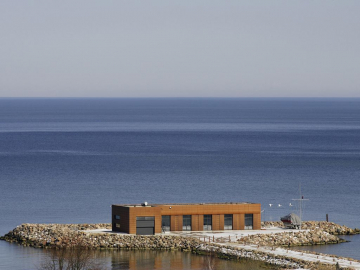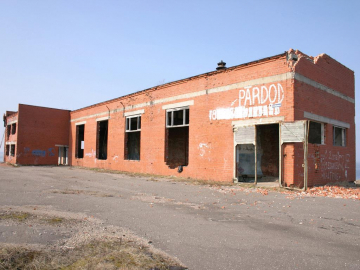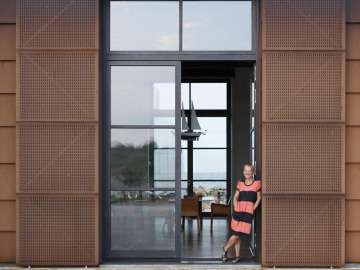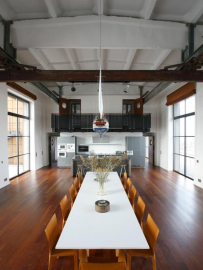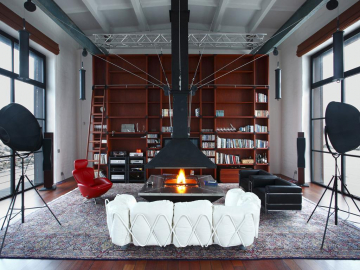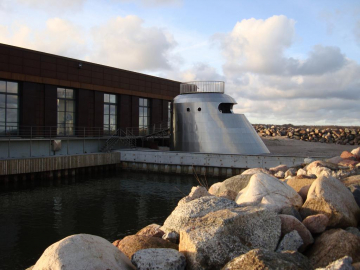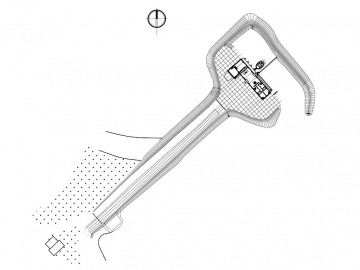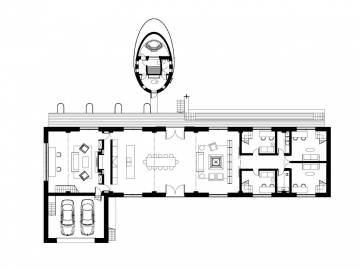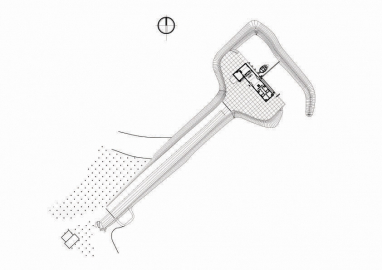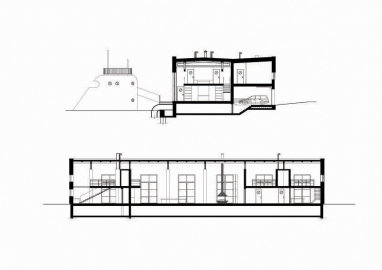Vacation Home on Easter Island at Kaltene
On a fine Easter morning, our family set out on a daytrip and we found a stone island in the Baltic Sea with the ruins of a building. It was the Fish Factory pumping station, built in the 1980s. Over 20 years since it was built, it has never been exploired. The monument of industrial architecture from the Soviet era was transformed into a vacation home for ourselves. Our vacation home was registered as Easter Island. The original Easter Island in the Pacific Ocean was also discovered at Easter and the images of the stone Moai are perforated in the sliding shutters of our home.
The red-brick Pumping Station is an unpretentious, linear, one-story, L-shaped building, which over the past 20 years has become a local landmark, a monument of Soviet industrial architecture.
The convertion project anticipates preservation of the islands landscape and architectural features. The jacht harbour was built. The facade of the building was isolated and covered with rusty Corten steel plates and sliding shutters. The shutters are also made of corten steel plates, but are perforated and mounted on stainless steel frames. The perforations are in the form of the Moai - the stone giants on Easter Island, downscaled 1:250. Architectural details and landscaping elements such as the gate and the outside lamps are also made of rusted steel.
The layout of the house and the arrangement of the furnishings are simple and symmetric, as dictated by the clear-cut architecture and the simplicity of the landscapes horizontal lines. The plan has three parts: the central full-height hall, a two story apartment for parents and 4 apartments for children.
The style of the interior was determined by the industrial origins of the building, as can be seen in the open constructions and the rough, untreated surfaces. The stark element is represented by the crudely finished brickwork walls, the concrete panels, the metal beams, platforms, stairs and railings, the aluminium windows. The contrast is achieved with consistent and abundant use of wood a style borrowed from the architecture of yachts and ships. The concept for the furnishings is based on high quality design that has stood the test of time. Many of the design objects found in the house are included in the 2006 Phaidon Design Classics encyclopaedia.
The new bathhouse- Nautilus- is located on the beach. It resembles the turret of a submarine and is clad with riveted stainless-steel plates. Against the background of the rusty, oblong block of the main house the shining Nautilus adds the needed final touch to the picture.
The family vacation home is an environmentally friendly object - autonomous in regard of heating, ventilation, water supply and sewage. The buildings are heated with help of a ground- source heat pump that takes energy from an artesian drill hole.

